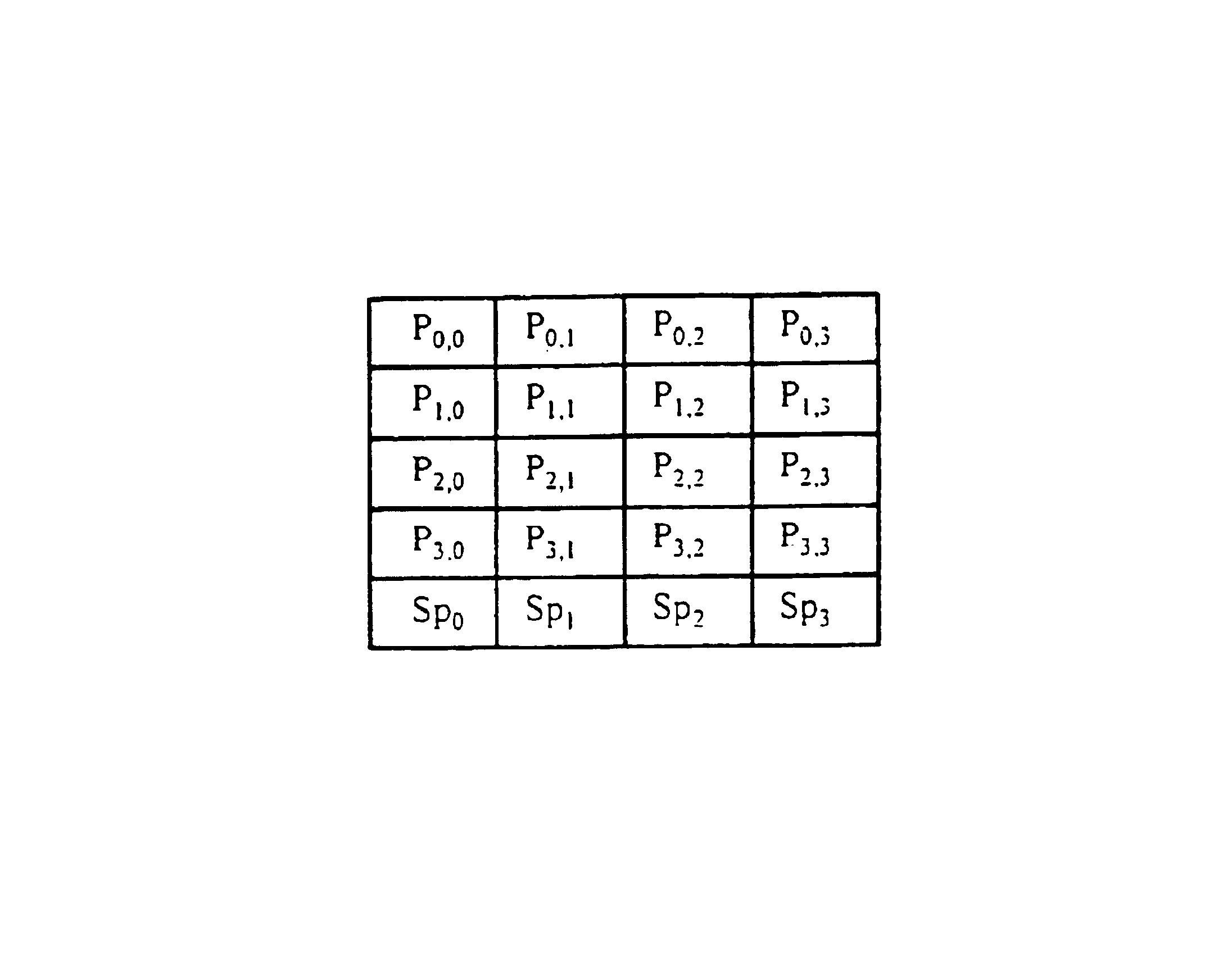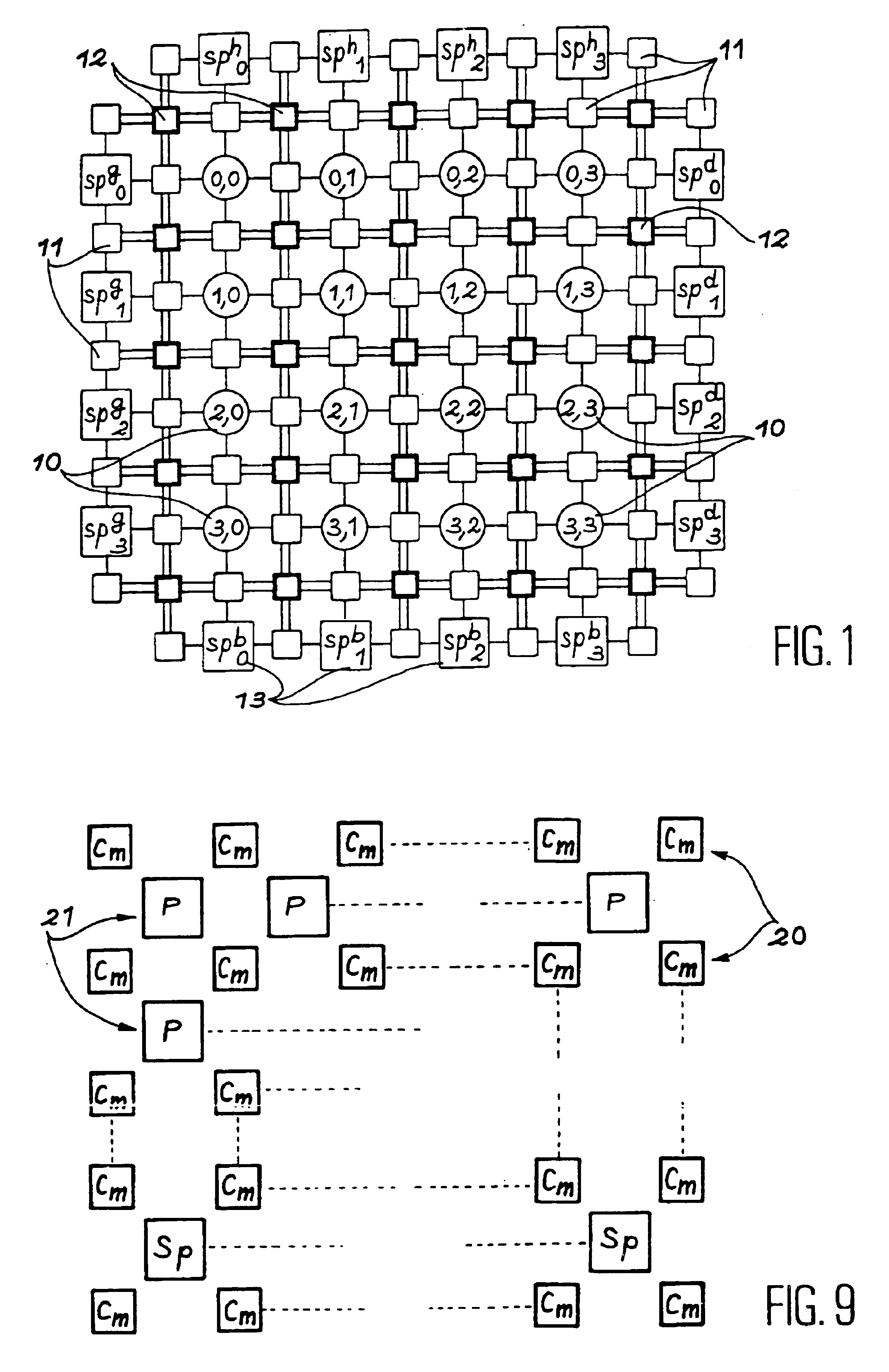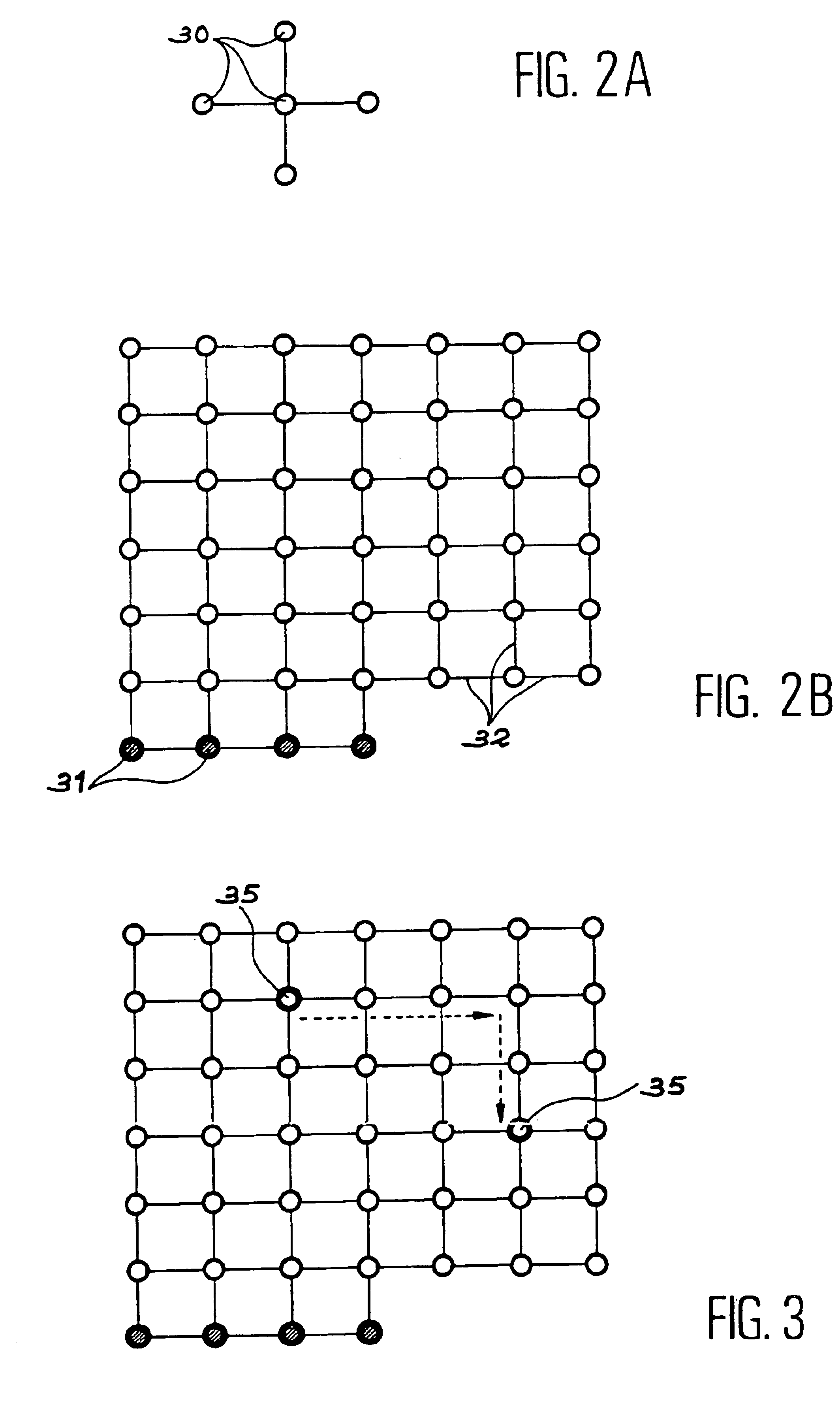Reconfiguration method applicable to an array of identical functional elements
a functional element and array technology, applied in the field of reconfiguration methods applicable to arrays of identical functional elements, can solve the problems of poor manufacturing output, complex software used, and increasing complexity of the computer both in terms of elements
- Summary
- Abstract
- Description
- Claims
- Application Information
AI Technical Summary
Problems solved by technology
Method used
Image
Examples
Embodiment Construction
This invention relates to a method for reconfiguring a network of identical functional elements.
Reconfiguration Method
In the "m-Track, n-Spare" structure of the known art, illustrated in FIG. 1, the reconfiguration method consists in searching for a track called "compensation track" to replace a faulty elementary functional element with a spare functional element. Then, starting with this faulty elementary functional element, each functional element is replaced with the next functional element available, the nearest one on the track. However, this method is really efficient only when there are spare functional elements in at least one line and one column, which is not possible with one line of spare functional elements and two unidirectional tracks. Also, such a method does not allow the number of switches in the communication tracks to be reduced.
On the other hand, the reconfiguration method of the invention is based on a positioning technique not correlated with routing.
Positionin...
PUM
 Login to View More
Login to View More Abstract
Description
Claims
Application Information
 Login to View More
Login to View More - R&D
- Intellectual Property
- Life Sciences
- Materials
- Tech Scout
- Unparalleled Data Quality
- Higher Quality Content
- 60% Fewer Hallucinations
Browse by: Latest US Patents, China's latest patents, Technical Efficacy Thesaurus, Application Domain, Technology Topic, Popular Technical Reports.
© 2025 PatSnap. All rights reserved.Legal|Privacy policy|Modern Slavery Act Transparency Statement|Sitemap|About US| Contact US: help@patsnap.com



